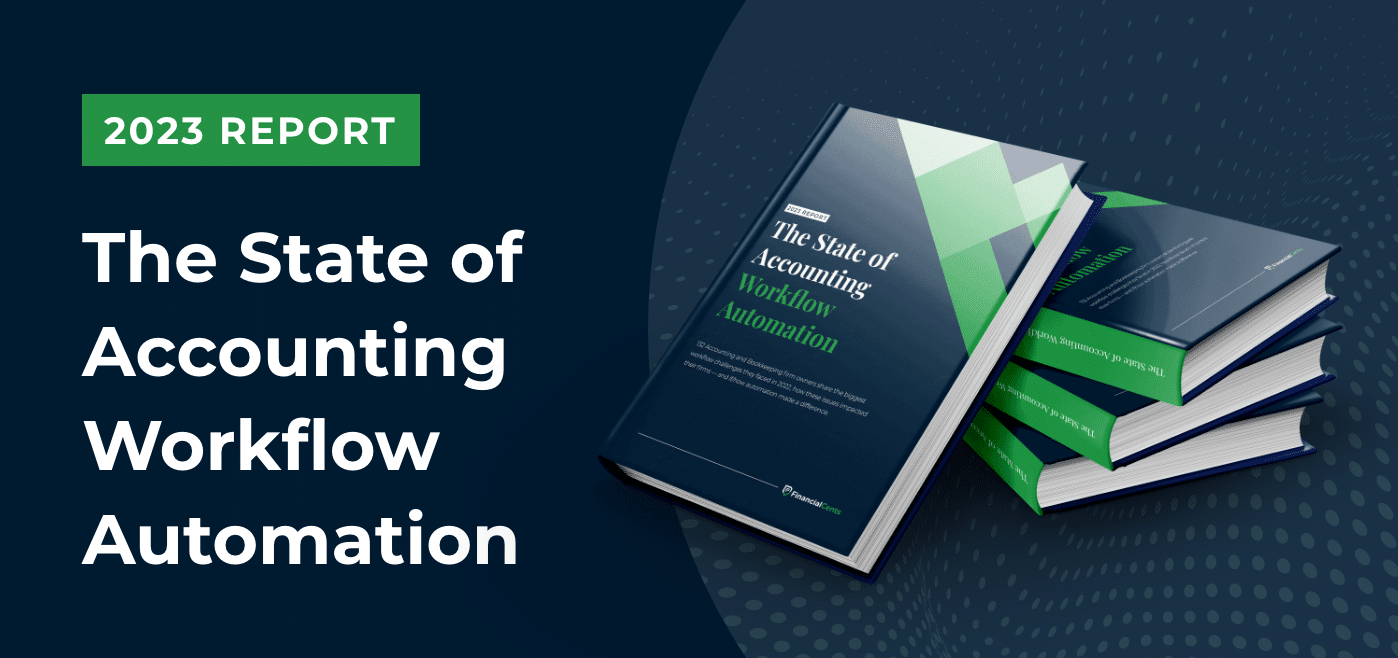Financial Cents is excited to release the inaugural 2023 State of Accounting Workflow Automation Report, based on a survey of 132 accounting and bookkeeping firm owners. This report provides valuable insights into the challenges that firms faced in 2022 and the benefits of workflow automation.
But first, what is accounting workflow?
Accounting workflow refers to the process of managing the tasks and activities involved in the accounting and bookkeeping process. It includes all the steps required to complete a particular task or project, from the initial data entry to the final reporting and analysis.
The accounting workflow typically involves several stages, such as data entry, bookkeeping, account reconciliation, financial reporting, and analysis. Each stage of the workflow may involve multiple tasks that need to be completed in a specific order to ensure accuracy and completeness.
What is accounting workflow automation?
As a small to mid sized firm owner, managing your workflow and ensuring everything is done efficiently and accurately can be a daunting task. Manual processes and tasks can take up valuable time and resources, leaving you with less time to focus on growing your business. The solution to this problem is accounting workflow automation.
One of the key benefits of accounting workflow automation is the ability to automate manual tasks. This includes recurring work, as well as client data collection and tracking work status. By automating these tasks, you can save a significant amount of time and reduce the risk of errors. This frees you up to focus on more strategic work, such as client advisory services or business development.
To get started with workflow automation, it’s important to create SOPs for your team. These SOPs should include workflow checklists that outline the steps required to complete a particular task. This ensures that everyone is following the same process, which can help to reduce errors and ensure consistency across your team. SOPs can also help to identify any bottlenecks in your workflow, which can be addressed to improve efficiency.
Profiles of Survey Respondents
Most of our respondents identified themselves as small firm owners with 1-10 team members. Over half of our respondents identified themselves as fully remote firms, while the remaining 50% is split between hybrid and on-site, with hybrid firms making up a larger chunk. There’s almost an even split between the types of firms represented, which is to be expected since many firms offer multiple and related services. It’s normal for accounting firms to do some bookkeeping work, and for bookkeeping firms to do some tax work.
Key Takeaways
Workflow was the biggest challenge firms faced in 2022, making up 66.7% of the overall general challenges they came up against.
Spending time on manual work was the biggest workflow issue firms faced in 2022. However, workflow automation cut time spent on manual work from an average of 1-10 hours to an average of 0-5 hours. This means that firms that implemented workflow automation software were able to significantly increase productivity and efficiency.
Furthermore, 70.5% of respondents consider recurring tasks as the biggest feature in accounting workflow software. Automating these tasks can save firms a significant amount of time and reduce the risk of errors.
72.7% of respondents assess the effectiveness of a workflow automation software by how smoothly their systems and processes run. This highlights the importance of not only selecting the right workflow automation software, but also implementing it correctly and ensuring that it integrates seamlessly with existing systems.
Chasing down clients for documents is still one of the biggest issues accountants and bookkeepers struggle with. Before automation, 53.8% of respondents say the process was slow but after implementing workflow automation, 68.2% say the process became faster.
82.6% of respondents initially attempted to solve their workflow challenges by only setting up systems and processes while 55.3% bought workflow automation software. Both parties soon realized that both go hand in hand. Workflow automation software is not a magic wand, it needs a good foundation (systems and processes) to give you the best outcomes.
Automating mundane, non-billable tasks gives firm owners time to do the strategic work of building their business. This is why the report includes insights and advice on workflow and automation from some of the top experts in the field, including Kellie Parks, Brandon Hall, Ryan Lazanis, Gabrielle Fontaine, Jason Staats, and Dave Kersting.
Over to you
Download the report if you’re:
- Struggling with workflow challenges
- Trying to diagnose the cause of your firm’s workflow challenges
- Wondering if your firm is ripe for workflow automation
- Confused about where to start with workflow automation
- Looking to improve workflow automation in their firms
- Evaluating different workflow automation software solutions and trying to find the best-fit for their goals.
You’ll find the data, insights, and advice invaluable in taking you from where you currently are to where you want to be in your workflow automation journey.






